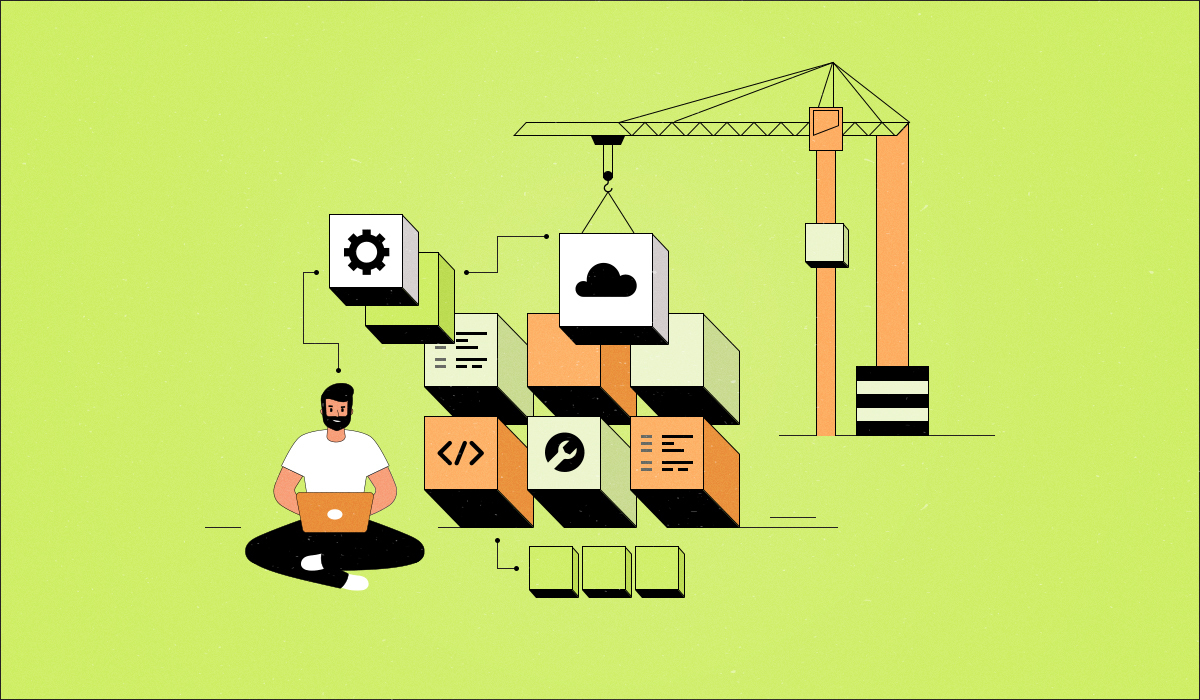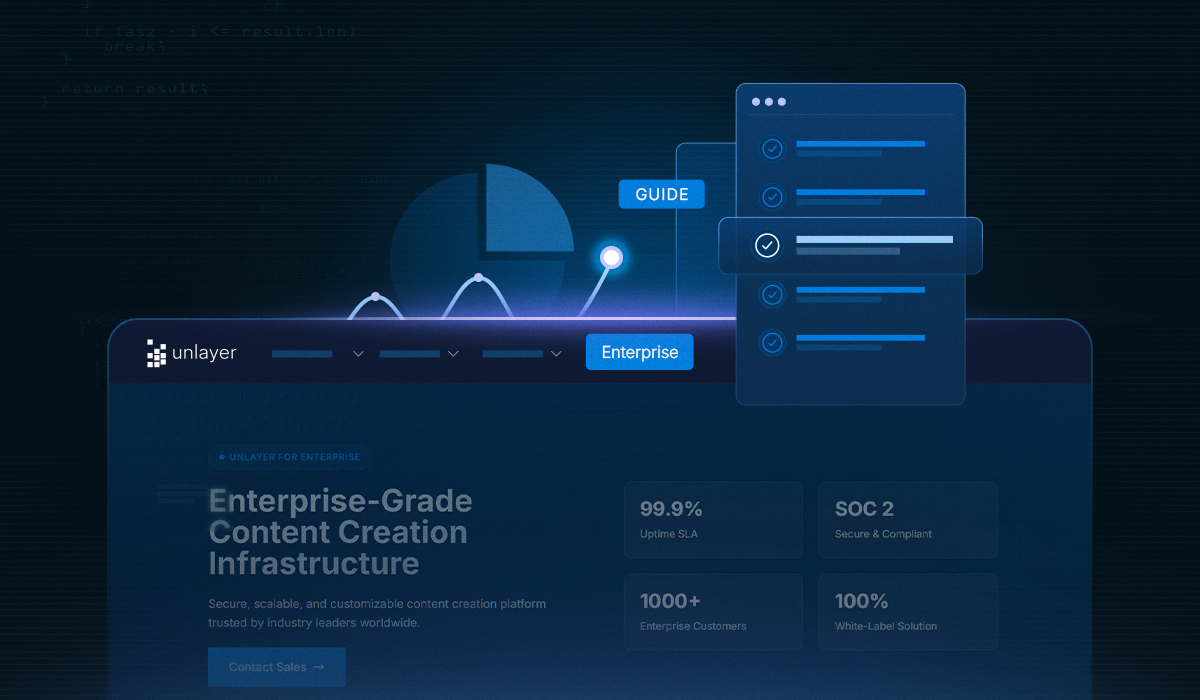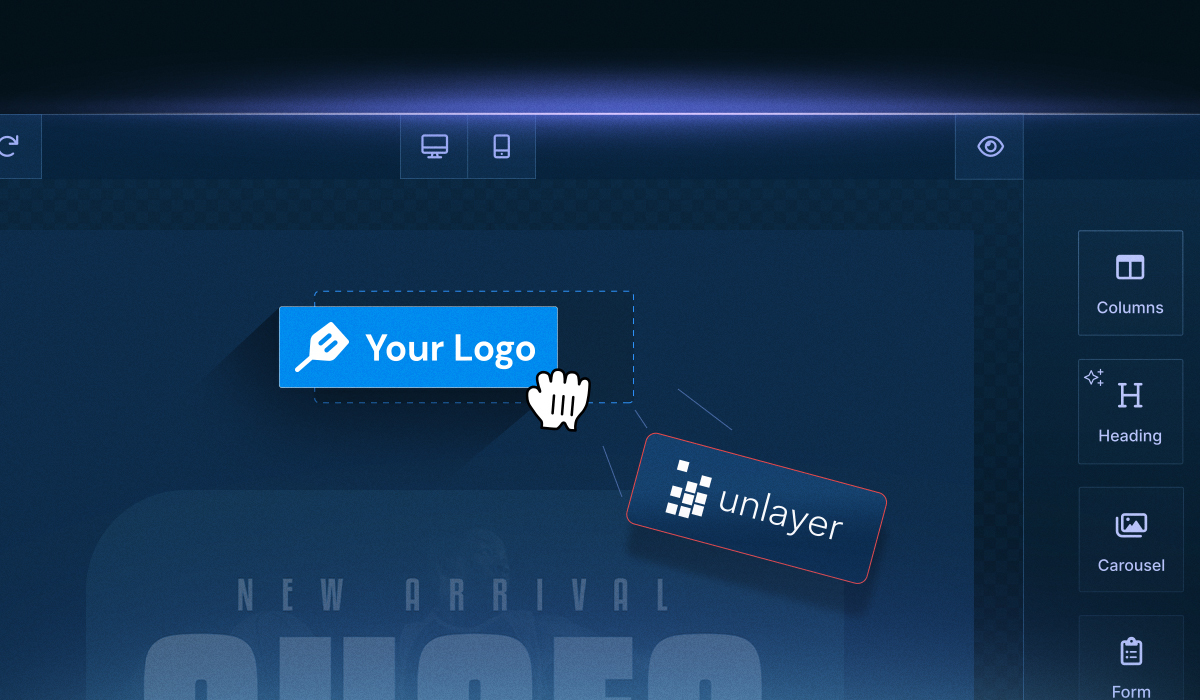As modern users expect more from CRMs, internal tools, and SaaS platforms, the need for in-app content creation tools—emails, landing pages, popups, and documents—is on the rise.
Users no longer want to switch between tabs or external platforms to get things done; they expect everything to work seamlessly within the product they’re already using.
To meet this demand, many teams embed multiple no-code tools into their host application.
However, managing multiple embedded builders inside your host application comes with its own set of challenges, such as inconsistent UI, redundant code, disconnected workflows, and performance bottlenecks.
And the stakes are high, as 59% of organizations report improved close rates when their CRM is integrated with tools like email marketing platforms, sales automation, and customer service apps.
Poorly managed builder SDKs and API integrations not only affect your internal velocity but also impact user satisfaction and business outcomes.
This guide will explore six practical strategies to help you simplify integration, unify user experiences, and scale efficiently. All of this without overwhelming your development team or compromising product quality.
Let’s dive in!
Strategy #1: Use a Unified SDK Across Embedded Builders
When building modern SaaS platforms, CRMs, or internal tools, it’s tempting to plug in different third-party libraries for each type of content builder. One for emails, another for landing pages, and yet another for popups or documents.
But that fragmented approach creates more problems than it solves.
Instead, a unified SDK that supports multiple builder types can save your team time, reduce technical debt, and offer a more cohesive end-user experience.
❌ Avoid fragmenting your stack with different libraries
Using separate libraries for each content type might seem flexible, but it quickly turns into a maintenance nightmare. You’ll end up:
Writing redundant integration logic for each builder.
Dealing with inconsistent UI/UX across tools.
Managing multiple sets of APIs, documentation, and support threads.
Facing challenges when trying to scale or customize features globally.
This patchwork of solutions also slows down your release cycles and increases the burden on QA and dev teams.
✅ Benefits of using a single SDK vendor that supports multiple builder types
Opting for a unified SDK helps streamline your workflows within the host application. Here's how:
Consistent UI/UX: Deliver the same polished, brand-aligned experience across emails, pages, popups, and more.
Centralized configuration: Manage themes, permissions, toolsets, and logic from one place.
Shared logic and storage: Use common save/load, export, and versioning functions across builders.
Faster development cycles: Integrate once and expand easily when your content needs grow.
Reduced overhead: Fewer dependencies mean less bloat, easier updates, and fewer breaking changes.
This approach not only simplifies integration but also gives product teams more flexibility to experiment and iterate.
🔄 Example: How Unlayer supports email, landing pages, popups, and docs under one SDK
Unlayer makes it easy to embed multiple types of builders using a single, developer-friendly SDK.

Whether you're building an email marketing workflow, a lead-gen landing page builder, a popup editor for product announcements, or even a document creation tool, Unlayer has it covered.
Key advantages of Unlayer SDK’s unified approach are:
One integration, multiple content types.
Built-in support for drag-and-drop editing, custom tools, and design themes.
Shared file storage and export logic across all builders.
Flexible APIs and callbacks for deep integration into your product workflows.
This means your users can design, save, preview, and publish, all from within your app, without juggling multiple tools or interfaces.
👉 Ready to simplify your builder stack?
Strategy #2: Modularize Builder Logic in Your Codebase
As your product grows and multiple embedded builders are deployed across different features or modules, keeping your integration code organized becomes crucial.
One way to do that is by modularizing builder-related logic. This way, you can reduce redundancy, improve maintainability, and make your integration more scalable.
Isolate business logic, styling configs, and editor state management
Avoid embedding configuration, business rules, or styling directly within component files or templates. Instead, structure your code so the following are cleanly separated:
Business logic: Determine how templates are loaded, saved, or processed based on user roles, triggers, or workflows.
Styling configs: Manage theme variables, layout settings, or custom tool visibility from a centralized config file.
Editor state: Track changes, autosave status, or live preview toggles through a shared state management system (e.g., NgRx, Redux, Vuex).
This separation of concerns helps reduce coupling and makes your builders easier to debug and extend.
Reuse across different contexts (CRM campaigns, onboarding, etc.)
Once modularized, your builder logic becomes reusable across various product areas:
CRM campaigns: Use the same builder setup for sales emails, follow-ups, or newsletters.
Onboarding flows: Generate interactive onboarding screens or welcome messages with consistent styling and behavior.
User-triggered events: Allow users to trigger popups or documents dynamically without needing separate codebases for each type.
You save time by writing logic once and deploying it where needed with minor adjustments.
Dev best practices: Lazy loading, shared services, centralized themes
To optimize the performance and developer experience of your multiple embedded builders:
Lazy load builders only when the user opens a design tool, to avoid heavy initial payloads.
Use shared services to handle API calls, template storage, or export logic, keeping your components lean.
Centralize themes and branding so changes (like switching to dark mode or updating fonts) reflect across all builder instances automatically.
By following these best practices, you maintain a clean codebase that’s easy to test, extend, and debug, even as the number of embedded builders in your product grows.
Strategy #3: Maintain a Consistent UI and UX
When managing multiple embedded builders inside your product, visual and functional consistency becomes more than just a design concern.
A disjointed user experience can erode trust, cause user frustration, and create unnecessary learning curves.
Why UI & UX consistency matters across multiple embedded builders
Consistent UI and UX across all builders lead to:
Faster onboarding: Users can intuitively move between tools without re-learning how each one works.
Improved user satisfaction: A cohesive experience builds familiarity and confidence.
Stronger brand identity: Visual alignment across editors reinforces your product’s design system.
Fewer support issues: When tools behave consistently, users are less likely to get stuck or confused.
For platforms offering in-app creation tools across different areas (marketing, sales, support, etc.) or that are public-facing platforms in general, UX consistency is key to delivering a seamless experience.
The problem with stitching together different editors with different UIs
Using separate third-party editors for different content types might work in the short run.
But it often results in:
Mismatched toolbars, modals, and fonts across builders.
Inconsistent workflows for similar actions like saving or previewing content.
Conflicting design themes that disrupt your overall interface.
Technical limitations when trying to unify styling or behavior.

This kind of UI fragmentation adds unnecessary complexity for both end-users and developers, making your product feel patched together rather than thoughtfully integrated.
🎨 How Unlayer allows theme customization and white-labeling
Unlayer is built with brand consistency in mind. Whether you're embedding an email builder in a CRM or a page builder in your onboarding tool, you can easily match the editor's UI to your platform's look and feel.
With Unlayer, you can:
Apply custom themes to match your light/dark mode or design tokens.
Reposition or hide tool panels for a cleaner UX.
Inject custom CSS or JS for full control over styling.
White-label the entire experience, removing any third-party branding.
This level of customization ensures that your end-users feel like they’re using a native part of your product, and not a bolt-on tool.
Strategy #4: Support Multi-Content Workflows Without Tab-Switching
End-users especially marketers, customer success teams, and product managers expect seamless workflows inside the tools they already use. They don’t want to leave your CRM or internal dashboard for creating different types of content.
Why?
Because jumping between multiple apps or browser tabs breaks focus, slows down execution, and creates fragmented user experience.
Therefore, having a fully supported multi-content workflow within your host application is a core expectation.
End-users expect to create emails, popups, and pages without jumping between apps
Whether your platform supports sales campaigns, onboarding flows, or customer engagement, your users need to create a variety of content types quickly. That might include:
Emails for outreach, follow-ups, or automated sequences.
Landing pages for signups, webinars, or lead magnets.
Popups for announcements, limited-time offers, or surveys.
Documents for contracts, proposals, or onboarding guides.
Switching to external tools for each of these slows things down and disconnects your product from the end-to-end workflow users expect.
How to embed multiple builder types inside your host app without extra overhead
The key is embedding multiple builders contextually, right where the user needs them, without bloating your app or complicating the dev handoff. Here’s how:
Use lazy loading to load each builder only when needed (e.g., when a user clicks “Create new email”).
Pass shared context (user data, campaign info, etc.) into the builder for a personalized experience.
Reuse common logic like save/export handlers, themes, and role-based permissions across builders.
Design adaptive UIs that load different builder types based on user flow or trigger.
This modular approach allows you to add more creation tools over time, without rewriting your stack each time.
➡️ Note: Unlayer makes this easy with a unified SDK that supports all major content types with its email builder, page builder, popup editor, and document builder.
Strategy #5: Centralize Design Storage & Templates
As you embed more builders across your platform, your users will naturally start creating and reusing content. If each builder manages its own designs in isolation, you’ll quickly run into duplication, inconsistencies, and a poor user experience.
So, a centralized design storage strategy ensures users have a single source of truth for templates, branding elements, and reusable content (a.k.a. custom blocks) across all builder types.
❌ Avoid duplicating templates and user designs across builders
When storage isn't unified:
Users end up recreating the same email headers or footers across tools.
Templates become siloed within specific builders, making reuse difficult.
Brand consistency suffers when each team uses slightly different versions.
Content teams can’t easily repurpose assets across different formats (e.g., email → landing page).
This fragmentation wastes time, clutters your database, and leads to design drift over time.
✅ Build or plug into a unified design library or storage solution
A shared design library, whether custom-built or integrated with a CMS, makes it easier to:
Access and reuse saved designs across emails, pages, popups, and documents.
Apply global updates to templates (e.g., brand changes or compliance updates).
Categorize templates based on use case, department, or team.
Enable role-based access to restrict who can edit, use, or publish templates.
By centralizing design assets, you enable faster content production without sacrificing control or consistency.
Unlayer SDK: Programmatic load/Save of designs (JSON, HTML, PDF, images)
Unlayer offers built-in support for design storage with a flexible SDK. Developers can:
Load designs programmatically based on user profiles, template IDs, or saved drafts.
Save user-created content in multiple formats, such as JSON for editing, HTML for rendering, or PDF/image for sharing.
Export designs to external storage or CMS platforms for publishing or reuse.
Integrate with headless workflows, enabling backend automation or real-time design rendering.
Strategy #6: Optimize Embedded Builders for Performance and Load Time
As useful as embedded builders are, they can become heavy if not handled properly.
Poor performance, especially slow load times, can frustrate users, stall workflows, and increase bounce rates.
If you're embedding multiple builders into different parts of your host app, optimizing for speed becomes essential.
Here’s how to keep things fast, responsive, and scalable.
Lazy loading only when the builder is needed
Don’t load builder code upfront with the rest of your application, specifically if users won’t always need it.
Instead:
Lazy load the builder component only when the user clicks "Create" or "Edit".
Bundle it separately to avoid bloating your main app bundle.
Use dynamic imports or feature modules in frameworks like Angular, React, or Vue.
This approach speeds up initial load time and ensures builder resources are downloaded only when necessary.
Caching or prefetching builder assets
For users who frequently use builders, caching or prefetching can drastically improve perceived performance:
Prefetch scripts in the background when a user is likely to interact (e.g., after login or entering a creation flow).
Use browser caching to avoid re-downloading builder assets each session.
Version and CDN-host static files so updates don’t block rendering or break functionality.
These small steps help keep embedded builder interactions snappy, especially for returning users.
Case for a lightweight, embeddable SDK like Unlayer’s
Unlayer is built with performance in mind. It's SDK:
Loads only what’s needed (no bloated dependencies or unused features).
Supports modular loading of different builder types (email, pages, popups, docs).
Is designed to work inside modern SPA frameworks with minimal overhead.
Allows for on-demand loading and teardown, ideal for dynamic apps and internal tools.
Even when embedding multiple builders, Unlayer’s lightweight architecture ensures fast load times and smooth editing experiences.
Bonus: How to Choose the Right Embedded Builder Partner
When embedding multiple builders across your platform, you need a solution that goes beyond surface-level features.
Look beyond the builder UI—consider API flexibility, documentation, support, and extensibility
A polished interface is great, but it’s not what keeps your integration running smoothly long-term. What truly matters is how well the SDK fits into your architecture and supports your team’s workflows. Look for:
Flexible APIs that allow deep integration with your data, user permissions, and publishing workflows.
Developer-friendly documentation with clear examples, starter code, and GitHub support.
Enterprise-level support, including SLAs and roadmap visibility.
Customization and extensibility, so you can build custom tools, themes, or behavior per use case.
These capabilities are what enable scale, not just setup.
Conclusion: Build Once, Reuse Everywhere
Managing multiple embedded builders doesn’t have to come with duplicated work, fragmented UX, or bloated codebases. With the right strategy and the right SDK, you can centralize configuration, unify the user experience, and scale effortlessly across teams and product areas.
👉 Looking for a builder that fits into all your tools and workflows?
FAQs About Managing Multiple Embedded Builders
1. Why would I need multiple embedded builders in one platform?
Different teams or workflows often require distinct content types, emails for marketing, landing pages for acquisition, popups for engagement, and documents for operations. Embedding multiple builders enables users to create everything they need without leaving your platform.
2. Isn’t it better to use separate tools for different builder types?
Not necessarily. Using separate tools means inconsistent UX, redundant logic, and context switching for users. A unified SDK (like Unlayer) with support for multiple builder types simplifies development and delivers a more cohesive experience inside your host application.
Moreover, Unlayer is also framework-friendly. For example, if your app is built on React, Unlayer offers a dedicated React Builder that lets you seamlessly embed email, popup, landing page, and document builders in your React workflow.
3. How do I manage branding and design consistency across all builders?
By centralizing theme configurations and reusing shared styling logic, Unlayer allows you to apply consistent themes, hide or customize tools, and fully white-label the editor UI across emails, pages, popups, and docs.
4. What’s the best way to handle storage and reuse of templates?
Centralize your design assets. Don’t let each builder store its own templates in isolation. Unlayer allows you to load and save designs programmatically (JSON, HTML, PDF, or image), making reuse and version control easy across content types.
5. How flexible is the Unlayer SDK for custom workflows and roles?
Very. You can configure tools per user role, inject custom logic, and even create new content blocks to match your business needs. The SDK is designed to be both customizable and developer-friendly.
6. Can I use Unlayer in both public-facing apps and internal tools?
Yes. Many teams embed Unlayer in customer-facing SaaS platforms, admin dashboards, CRMs, and internal marketing tools. The SDK is modular and adaptable to various environments and use cases.




